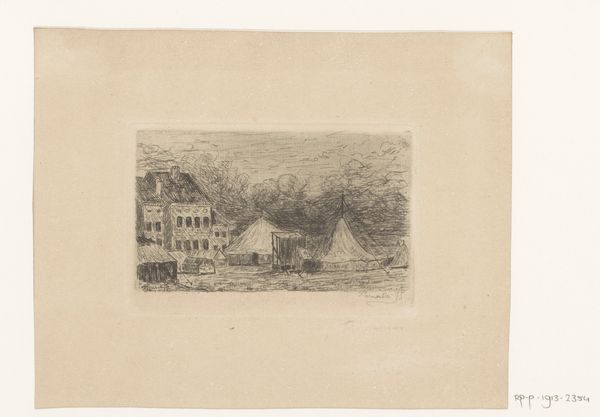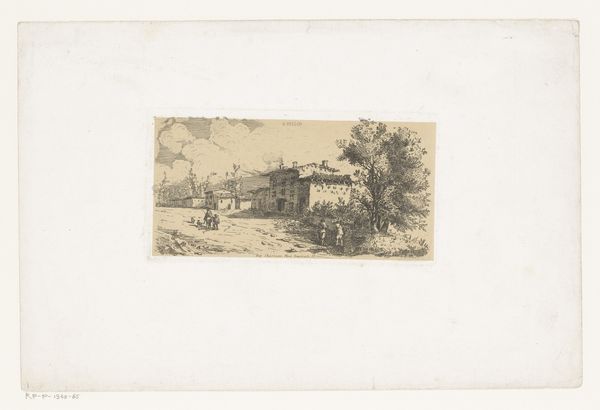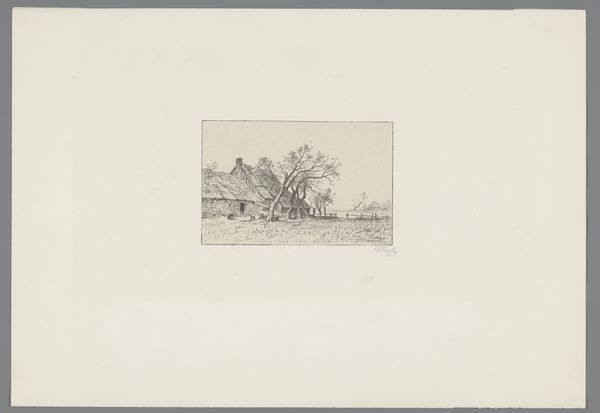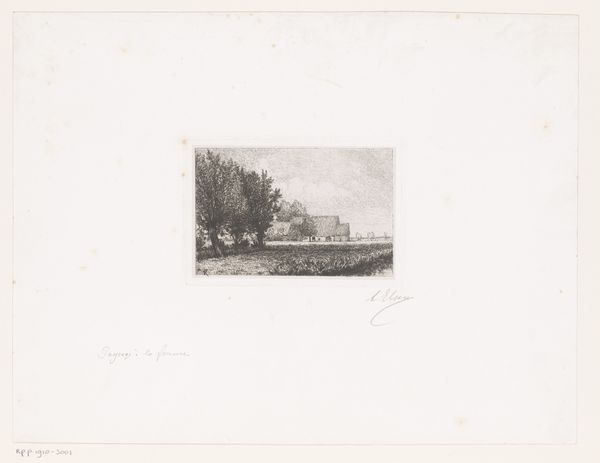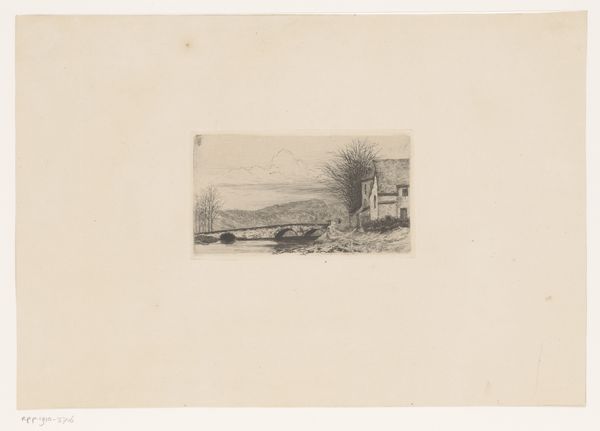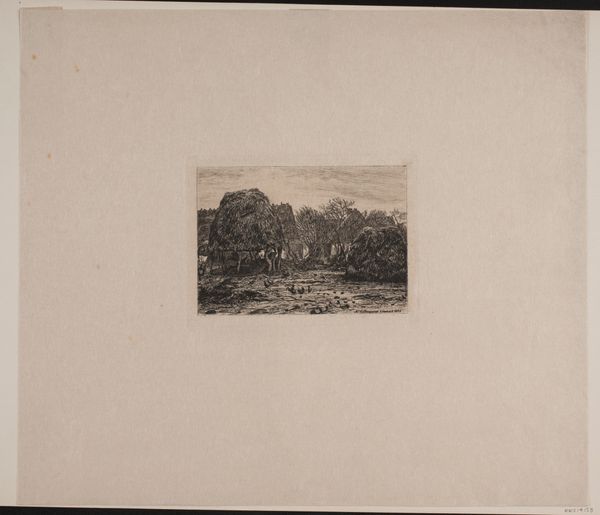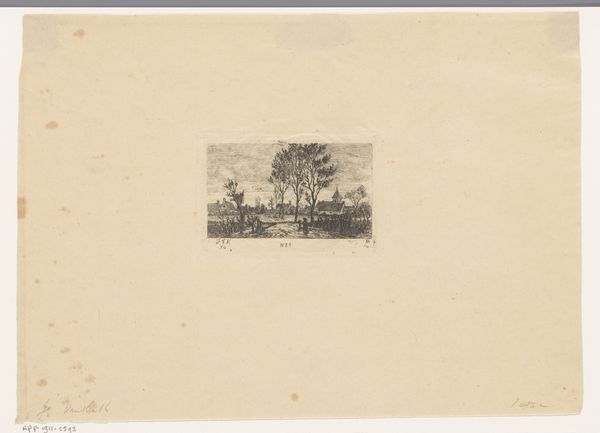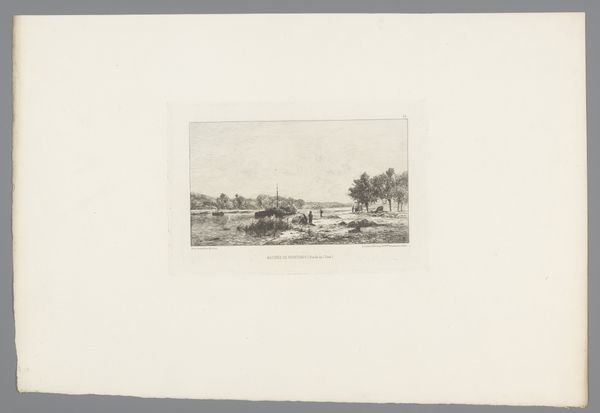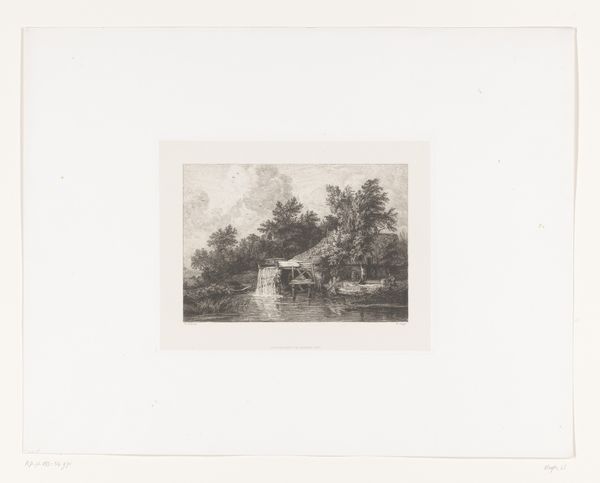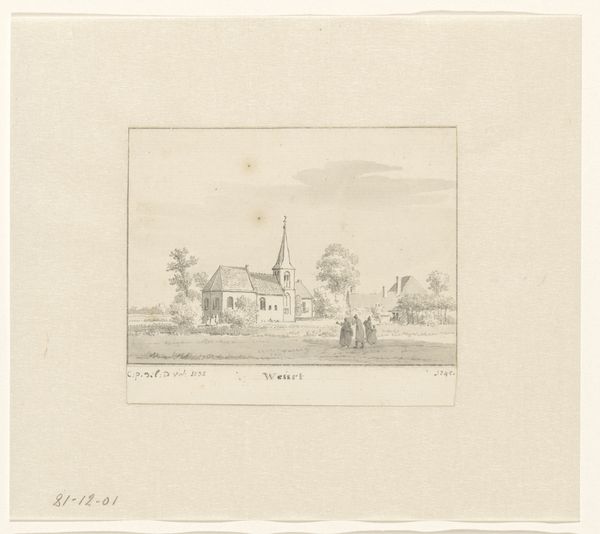
drawing, print, etching, paper, ink
#
drawing
#
aged paper
#
dutch-golden-age
# print
#
etching
#
landscape
#
white palette
#
paper
#
archive photography
#
ink
#
ink colored
#
genre-painting
Dimensions: height 88 mm, width 110 mm
Copyright: Rijks Museum: Open Domain
Editor: This etching by Paul Parmentier, "Muziektent en uitspanning bij een dorp," is a small, delicate work, likely made between 1864 and 1902. The scene feels incredibly still and perhaps a bit bleak. I’m curious, how do you interpret the setting within the broader artistic and social landscape of its time? Curator: It’s a great question. Looking at this piece, it is key to recognize that these sorts of leisure scenes were often carefully constructed. Notice the composition itself. There’s the implied leisure of the music tent and open space, but it is very modest in scale, isn’t it? Consider the late 19th century Dutch art world and its complex relationship to rapid urbanization and industrialization. Editor: So, is the simplicity perhaps a comment on that societal shift? Curator: Precisely! Artists, particularly those focusing on genre scenes or landscapes like this one, were actively shaping a vision of Dutch identity. There’s a careful negotiation occurring between a rapidly modernizing world and a desire to preserve and perhaps idealize a simpler, perhaps more agrarian, past. Does this vision resonate with its audience or critique them? Editor: That's a fascinating point. I hadn't thought about how the choice of subject matter and style might reflect that tension between tradition and modernity. Curator: Indeed. And consider who had access to leisure, and whose lives and labors underwrote these spaces and activities depicted here. The 'archive photography' aesthetic as we would call it today feels very intentional and almost documentary. Is this an inclusive or exclusive public? Who would be purchasing such scenes, and what message would they convey? Editor: It completely changes the way I look at the work! I'll definitely carry these ideas with me moving forward. Curator: And I see how important close-looking is and being receptive to unexpected interpretations and political implications of historical art works!
Comments
No comments
Be the first to comment and join the conversation on the ultimate creative platform.
